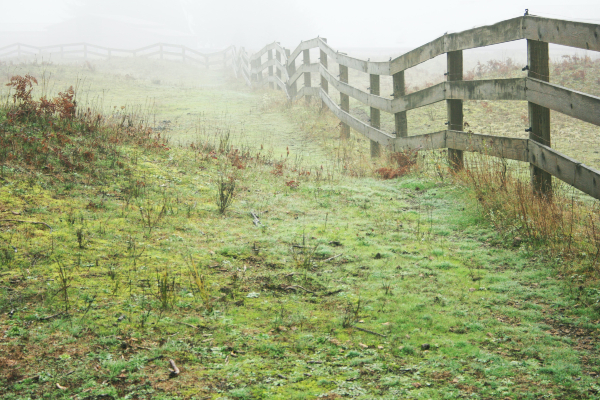
Spring, warm weather and longer days sees a surge in interest in garden works each year, and where householders improve and replace, boundary disputes are sure to follow…
One recent long-running case saw an Essex couple fighting over six inches of disputed land ownership for eleven years, with costs predicted to be as high as £60,000. The couple, Philip and Denise New, say they have had to remortgage their home to cover the costs after losing their case.
The argument started after they replaced rotten fence panels: they say they used the original cement posts that had been there for 50 years, but their neighbours said the fence was in the wrong place and that the News were trespassing on their land.
Mediators and land professionals were called in, but the neighbours were unable to reach any agreement over the disputed land, with the case finally reaching the High Court.
Property law expert Sabina Haag of Nicholsons Solicitors commented: “This is an extreme example but wildly disproportionate legal costs are not uncommon when it comes to boundary disputes, not to mention the irreparable damage it will do to neighbourly relations.”
“The best approach is to try and avoid arguments arising in the first place, by having a quiet chat with neighbours before you do any work. If that highlights a difference in opinion and you can’t resolve things, then staying civil is important. You still have to live next door to each other and, even if you think a house move may be the solution, keep in mind that you will have to declare any dispute when you come to sell your property.”
Boundary problems often arise because nobody knows who owns and is responsible for a fence or where the legal boundary is. Despite the myth, the Land Registry plans more often than not show “general boundaries” only and cannot be relied on when determining the precise position of a legal boundary. While modern housing will often state who owns which boundary, or whether it is a party fence, it is not always clear with older properties. Locating original title deeds or checking with the local authority may help to recover old documents but if no documentary evidence is available or those documents are not sufficiently clear, then more work will be needed.
One option is to apply to the Land Registry for what is known as a ‘determined boundary’, obtaining an expert’s report to make your case and submitting a surveyor’s drawing of the proposed boundary. Approval is not a guaranteed solution, as the neighbour must still agree with the determined boundary; if they don’t then it would mean going to a tribunal.
Otherwise, an offer of payment for an area of land under dispute, in return for setting an agreed boundary may be a solution.
Another possibility where there is uncertainty over the boundary line would be to fence the area concerned and then, after ten or twelve years (depending on whether the land is registered or unregistered) make an application for formal ownership claiming ‘adverse possession’. This may be an option where the adjoining landowner is not known or other situations where no immediate neighbour is involved and actively disputing the boundary.
Establishing where the boundary is and who is responsible for it does not place any requirement on the owner to replace a fence, so if you are the one determined on the upgrade, it may be worth considering offering to pay for it. There is no reason why not, even if you are not the one who is responsible, but you will still need to get agreement from your neighbour first. Discussing what you have in mind also gives an opportunity to agree who is responsible for future maintenance.
Sabina added: “If you really don’t feel able to have an initial conversation, or if you’ve already landed yourself in the middle of a red-hot boundary dispute, then that’s the time to call in a professional to act as intermediary with your neighbour, rather than pressing on and raising the temperature further. We will do our best to help you settle that dispute quickly and amicably with the aim to keep costs down and preserve neighbourly relations as far as possible.”
If you would like some further information about the contents of this article, contact us today on 01502 532300 or email us using the 'make an enquiry' form.
This is not legal advice; it is intended to provide information of general interest about current legal issues.
